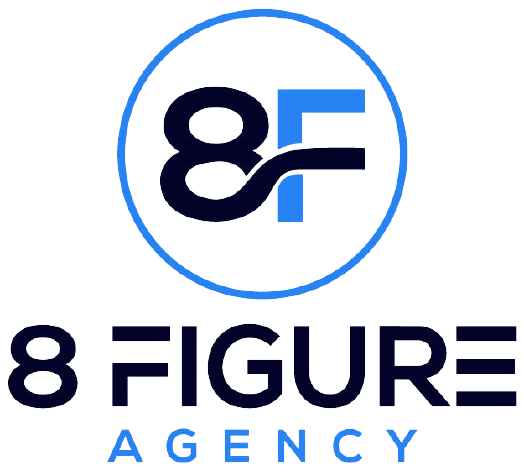Team alignment is key to the success of any business. It allows teams to work together with clarity and trust, creating a more productive atmosphere while enabling them to reach company goals faster.
As businesses grow, however, achieve team alignment can become challenging. Keeping a consistent vision and purpose, ensuring everyone understands their roles and responsibilities, and fostering an environment of collaboration are key elements in scaling a business without sacrificing team alignment.
This article will help you answer the question, “How do I keep the team in alignment as we scale?”. We will explore the intention, framework, and audit approach to team alignment as a way of keeping teams in sync as your business grows.
Setting the Intention
The first step to knowing how to achieve team alignment is setting clear intentions for your organization. Follow the strategies below help keep your team on the same page:
Defining Your Team’s Core Values
The core values of your team are the foundation of its culture and define how everyone should act. These values will guide decisions, actions, and behavior throughout the organization so it’s important to take the time to discuss and agree upon them.
Also, make sure the leadership team communicate these core values to your team regularly and find ways of reinforcing them. This will ensure everyone is on the same page and working towards the same goals.
Examples of core values could include things like respect, integrity, and accountability. These will translate into real-world behaviors and will help everyone understand how the team should interact with each other.
Identifying Your Team’s Purpose and Goals
Once the core values are established, it’s time to define your team’s purpose and goals. These should be specific and measurable, so you can track progress against them as you move forward.
Your team goals should also be tied back to the overall mission of the organization. This will help everyone understand how their efforts contribute to the bigger picture and make sure everyone is working towards a common goal. It will also help as the groundwork when you are demanding greatness from your team.
Communicating Your Team’s Vision
Having a unified vision for your team is critical for success and alignment. Make sure to communicate your team’s vision to everyone in an engaging way that encourages understanding and buy-in from all members.
Fostering team alignment means they should be able to make decisions that support the vision, even when the team is not present. This will help create an environment of trust and collaboration among team members and even the entire company.
Not to mention, it will ensure that everyone is working towards the same goals and objectives so that the team can be successful.
Establishing Clear Expectations and Objectives
To ensure everyone is working together towards the same goals, it’s essential to set clear expectations and objectives. Everyone should understand their roles and responsibilities, as well as how their work fits into the bigger picture.
Having a common understanding of each other’s roles will help ensure everyone is on the same page. It also eliminates confusion and reduces miscommunication, so tasks can be completed more efficiently and effectively.
For example, if you expect your sales team to upsell ten legacy clients each week to maximize revenue, then this should be clearly communicated effectively across all communication channels.
Encouraging Open Communication
Open communication is one of the most important elements for successful team alignment. Make sure to create an environment where people feel comfortable sharing ideas or concerns without fear of judgment or criticism.
You should also encourage team members to share feedback to foster collaboration and continuous improvement. Developing a healthy dialogue between team members allows everyone to learn from each other and ultimately build better solutions for the business.
Creating a Framework

A framework serves as the foundation to further improve team alignment and guides how teams can work together effectively. The framework should be tailored to your specific organization and team leaders, but here are some of the key components that should be included:
Developing a Structure for Decision-Making
Decision-makers should be identified so everyone knows who to turn to for guidance. This will help ensure that the team leaders are always making decisions that are aligned with the overall mission of the organization.
Start by defining the roles and responsibilities of each decision-maker on the team. This will help create clarity within the organization and ensure everyone is operating from a shared understanding.
Then, establish a decision-making process that everyone can follow. This will ensure that decisions are made in an organized and efficient manner.
Establishing Processes and Procedures
Having processes and procedures in place will help ensure everyone is working together efficiently. These should be clearly defined so that team members know what they need to do and when it needs to be done.
It’s also important to set up a communication system so that all the teams can keep each other updated on their progress. This will reduce miscommunication and improve team alignment.
Creating a Clear Chain of Command
A clear chain of command establishes who has authority over certain decisions or tasks. This helps avoid confusion and prevents conflicts from arising due to conflicting instructions from different leaders among the other team members. It also ensures accountability because people know exactly who is responsible for any given task.
An organizational chart and tools like project management software can be used to streamline team communication and establish a clear chain of command.
Providing Resources and Support
A better team alignment requires resources, such as adequate training, budget, and equipment. Make sure each team member has the tools they need to do their job effectively. Additionally, provide regular opportunities for each team member to connect and share best practices or offer support when needed.
Finally, recognize team successes so that everyone is motivated to continue working together towards the organization’s goals. Celebrating milestones will build morale and further reinforce the importance of team wins.
Defining Roles and Responsibilities
Each individual on the team should have clearly defined roles and responsibilities. Everyone should understand what is expected of them and how their contributions will help the team reach its goals.
Make sure to communicate these expectations clearly, so everyone can work together in an organized fashion. Encouraging collaboration and teamwork will also ensure that tasks are being completed efficiently and effectively.
Conducting Audits
Regularly conducting audits allows teams to assess their progress toward achieving their goals. This helps identify any areas for improvement or areas where additional resources may be needed.
Evaluating Team Performance
To maintain high team alignment and motivation, you must evaluate the team’s performance regularly. This can be done by measuring progress toward goals, conducting surveys to check in on team morale, and providing feedback and coaching to team members.
These practices will help keep the team focused on their goals while also ensuring that everyone is working together in the most productive way possible. Plus, with data on your team’s performance, you can better understand where you need to make adjustments or improvements for better results and can celebrate successes and congratulate team members on their hard work.
Measuring Progress Toward Goals
Creating measurable objectives allows teams to track their progress toward meeting those objectives. This should be done regularly so that teams can adjust if necessary and stay on track with their goals.
For instance, if a team has set a goal of increasing sales by 10%, they should track their progress regularly to ensure that they are on the right track. Regular monitoring also helps identify any areas where there may be an issue, so teams can address it quickly.
Identifying Areas for Improvement
Through regular monitoring and evaluation, teams can identify areas where they may need to make changes or adjustments. This could include adjusting the team structure or making alterations to the processes they use.
Create a process for how to capture weak areas or areas for improvement. This will provide the team with a framework to work from when making changes and improvements. For example, the team could hold brainstorming sessions to come up with ideas for improvement or use surveys to gather feedback from team members.
Providing Feedback and Coaching
Providing regular feedback and coaching to team members will help them stay motivated and focused on their goals. Feedback should be constructive and helpful so that the team can make improvements where necessary.
By providing constructive feedback, teams can identify areas of improvement and create action plans for how to address those issues. Additionally, it’s important to provide recognition and appreciation for team achievements, which will further motivate and encourage teams.
Encouraging Continuous Learning and Development
It’s important to make sure that teams are continuously learning and developing their skills to stay ahead of the competition. This could include attending professional development courses or workshops, participating in industry events, or even engaging in industry research.
Providing resources and support for learning and development will ensure that teams are up-to-date on the latest trends and have the necessary skills to reach their goals. Additionally, it will help foster an environment of continuous improvement, so teams can reach even greater heights.
Best Practices for Maintaining Team Alignment
Maintaining high team alignment requires an organization-wide effort. Implementing the following best practices will help teams stay aligned and motivated:
Foster a Positive Company Culture
Creating an atmosphere of positivity, encouragement, and mutual respect is essential for high team alignment. This includes fostering a culture of open communication and feedback, providing recognition for accomplishments, and encouraging collaboration between team members.
Prioritize Regular Communication and Feedback
Communication is key to any successful team. Make sure that teams are regularly engaging in constructive conversations about the tasks at hand and providing feedback when necessary.
Encourage Cross-Functional Collaboration
Teams should be encouraged to think beyond their job descriptions and collaborate regularly. This allows for creative problem-solving and encourages outside-the-box thinking.
Celebrate Team Successes
When teams reach their objectives, celebrate! Celebrations don’t need to be elaborate; even simple gestures of acknowledgment can make all the difference in creating an aligned team.
Address Conflicts and Challenges Proactively
It’s important to address conflicts or challenges quickly before they become bigger issues that could potentially derail the team’s efforts. Encourage teams to talk openly and honestly about any issues they have, so that they can come to a resolution quickly.
Encourage Personal and Professional Growth
High-performing teams need to constantly be looking for ways to push themselves and evolve. Encouraging team members to take on new challenges or explore interests outside of their roles will help them stay engaged and motivated.
Conclusion:
By following these key principles, teams can ensure that their efforts are effective and that their goals are being met. This in turn creates a more successful organization with a continued focus on growth and development. High team alignment leads to greater productivity, collaboration, creativity, innovation, and ultimately better business results.
With the right framework and audits approach, agencies can maintain high levels of team alignment as they grow and evolve into an 8-figure agency.
Need help transforming your barely-performing team into a high-performing one to drive massive success?
We’re here to help your business reach new heights and attain that 8-figures goal!



















































